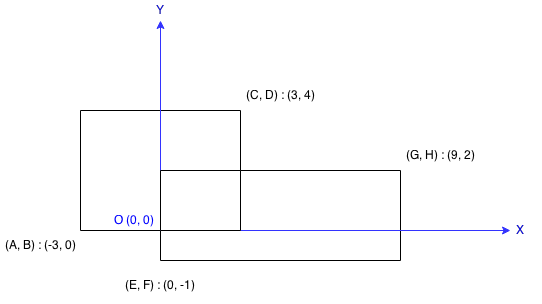Quoit Design
Time Limit: 10000/5000 MS (Java/Others) Memory Limit: 65536/32768 K (Java/Others)
Total Submission(s): 77740 Accepted Submission(s): 20729
Problem DescriptionHave you ever played quoit in a playground? Quoit is a game in which flat rings are pitched at some toys, with all the toys encircled awarded.
In the field of Cyberground, the position of each toy is fixed, and the ring is carefully designed so it can only encircle one toy at a time. On the other hand, to make the game look more attractive, the ring is designed to have the largest radius. Given a configuration of the field, you are supposed to find the radius of such a ring.
Assume that all the toys are points on a plane. A point is encircled by the ring if the distance between the point and the center of the ring is strictly less than the radius of the ring. If two toys are placed at the same point, the radius of the ring is considered to be 0.
InputThe input consists of several test cases. For each case, the first line contains an integer N (2 <= N <= 100,000), the total number of toys in the field. Then N lines follow, each contains a pair of (x, y) which are the coordinates of a toy. The input is terminated by N = 0.
OutputFor each test case, print in one line the radius of the ring required by the Cyberground manager, accurate up to 2 decimal places.
Sample Input
2 0 0 1 1 2 1 1 1 1 3 -1.5 0 0 0 0 1.5 0
Sample Output
0.71 0.00 0.75
AuthorCHEN, Yue
SourceZJCPC2004
RecommendJGShining | We have carefully selected several similar problems for you: 10061009100510081004
给定二维平面上的N个点,问其中距离最近的两个点的距离是多少,输出最短距离的一半。
典型的平面上最近点对问题。大学算法课上有,采用分治法。即首先把所有点按x排序,然后取x轴中点m,把所有点划分为左右两半L和R,在L和R中递归求最近点对的距离,假设为dL和dR。假设d=min(dL,dR)。则还需要判断最近点对是否会在中点m附近,假设存在这种情况,则跨越m的最近点对必须满足距离m小于d。把这部分点收集起来,按y排序,然后求任意两点之间的距离,期间可以break加速。
完整代码如下:
#include<iostream>
#include<vector>
#include<algorithm>
#include<functional>
using namespace std;
struct Point
{
double x_, y_;
Point() :x_(0), y_(0) {};
Point(double x, double y) :x_(x), y_(y) {};
};
bool CmpX(const Point &p1, const Point &p2) {
return p1.x_ < p2.x_;
}
bool CmpY(const Point &p1, const Point &p2) {
return p1.y_ < p2.y_;
}
// 暂时只算距离平方,最后开平方根
double CalDist(const Point &p1, const Point &p2) {
return (p1.x_ - p2.x_)*(p1.x_ - p2.x_) + (p1.y_ - p2.y_)*(p1.y_ - p2.y_);
}
double CalMinDist(vector<Point> &data, int l, int r) {
if (r - l == 2) {
return CalDist(data[l], data[l + 1]);
}
else if (r - l == 3) {
double d1 = CalDist(data[l], data[l + 1]);
double d2 = CalDist(data[l], data[l + 2]);
double d3 = CalDist(data[l + 1], data[l + 2]);
return min(min(d1, d2), d3);
}
int m = l + (r - l) / 2;
int mx = data[m].x_;
double dd = min(CalMinDist(data, l, m), CalMinDist(data, m, r));
double d = sqrt(dd);
vector<Point> rect;
for (int i = l; i < r; ++i) {
if (data[i].x_ > mx - d && data[i].x_ < mx + d) {
rect.push_back(data[i]);
}
}
sort(rect.begin(), rect.end(), CmpY);
for (int i = 0; i < rect.size(); ++i) {
for (int j = i + 1; j < rect.size(); ++j) {
double tmpd = CalDist(rect[i], rect[j]);
if (tmpd > dd)break;
dd = min(dd, tmpd);
}
}
return dd;
}
int main() {
freopen("input.txt", "r", stdin);
int n;
while (scanf("%d", &n)) {
if (n == 0)break;
vector<Point> data(n, Point());
for (int i = 0; i < n; ++i) {
scanf("%lf %lf", &data[i].x_, &data[i].y_);
}
sort(data.begin(), data.end(), CmpX);
printf("%.2lf\n", sqrt(CalMinDist(data, 0, data.size())) / 2);
}
return 0;
}本代码提交AC,用时982MS。
参考: https://www.cnblogs.com/MartinLwx/p/9757828.html 、 https://www.jianshu.com/p/8bc681afbaff


 要判断给出的点是否只有4个点,第一反应是用set集合,只要把题目给出的8个点都加入到set中,判断集合大小是否是4就可以了。
首先给出点的定义:
[cpp]
//点结构体
typedef struct P
{
int x,y;//两点坐标
bool operator<(const P& p)const//如果要加入到set中,需要重载<
{
//return this->x<p.x&&this->y<p.y;//注意这样会导致(0,0)<(0,1)且(0,1)<(0,0)的情况
return (this->x<p.x)||((this->x==p.x)&&(this->y<p.y));
}
bool operator==(const P&p)const//重载等于比较
{
return (this->x==p.x)&&(this->y==p.y);
}
};
[/cpp]
需要注意一点,因为需要把P加入到set中,而set是通过红黑树来排序的,所以需要重载小于<操作符。我最开始重载函数是这样写的
[cpp]
return this->x<p.x&&this->y<p.y;
[/cpp]
但是这样会有问题,如果给出两个点(0,0)和(0,1),会得出(0,0)<(0,1)和(0,1)<(0,0)都不成立的结论,也就是说无法给(0,0)和(0,1)排序,也就无法插入到set中,所以需要修改成
[cpp]
return (this->x<p.x)||((this->x==p.x)&&(this->y<p.y));
[/cpp]
这样就能判断(0,0)<(0,1)成立了。有关这个问题可以参考
要判断给出的点是否只有4个点,第一反应是用set集合,只要把题目给出的8个点都加入到set中,判断集合大小是否是4就可以了。
首先给出点的定义:
[cpp]
//点结构体
typedef struct P
{
int x,y;//两点坐标
bool operator<(const P& p)const//如果要加入到set中,需要重载<
{
//return this->x<p.x&&this->y<p.y;//注意这样会导致(0,0)<(0,1)且(0,1)<(0,0)的情况
return (this->x<p.x)||((this->x==p.x)&&(this->y<p.y));
}
bool operator==(const P&p)const//重载等于比较
{
return (this->x==p.x)&&(this->y==p.y);
}
};
[/cpp]
需要注意一点,因为需要把P加入到set中,而set是通过红黑树来排序的,所以需要重载小于<操作符。我最开始重载函数是这样写的
[cpp]
return this->x<p.x&&this->y<p.y;
[/cpp]
但是这样会有问题,如果给出两个点(0,0)和(0,1),会得出(0,0)<(0,1)和(0,1)<(0,0)都不成立的结论,也就是说无法给(0,0)和(0,1)排序,也就无法插入到set中,所以需要修改成
[cpp]
return (this->x<p.x)||((this->x==p.x)&&(this->y<p.y));
[/cpp]
这样就能判断(0,0)<(0,1)成立了。有关这个问题可以参考